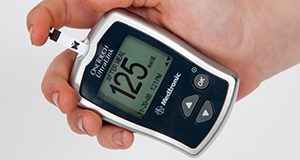Abstract
Low blood glucose, also called hypoglycemia, can be life-threatening for people with diabetes. It can be caused by eating too little food, taking too much insulin or other diabetes medication, or being extra active. If left untreated, low blood glucose can progress to diabetic coma. Everyone with diabetes needs to know the symptoms of low blood glucose so they can take action right away. This 2-page fact sheet discusses preparation, symptoms, and treatment. Written by Linda B. Bobroff, and published by the UF/IFAS Department of Family, Youth and Community Sciences, revised February 2018.
http://edis.ifas.ufl.edu/fy521
References
American Diabetes Association. (n.d.). Hypoglycemia (low blood glucose). Accessed on February 22, 2018. http://www.diabetes.org/living-with-diabetes/treatment-and-care/blood-glucose-control/hypoglycemia-low-blood.html
American Diabetes Association. (2017). 6. Glycemic targets. Diabetes Care, 40(suppl. 1), S48-S56. http://care.diabetesjournals.org/content/40/Supplement_1/S48 https://doi.org/10.2337/dc17-S009
Kedia, N. (2011). Treatment of severe diabetic hypoglycemia with glucagon: an underutilized therapeutic approach. Diabetes Metabolic Syndrome and Obesity: Targets and Therapy, 4, 337-346. https://doi.org/10.2147/DMSO.S20633
Unless otherwise specified, articles published in the EDIS journal after January 1, 2024 are licensed under a Creative Commons Attribution-NonCommercial-NoDerivs 4.0 International (CC BY-NC-ND 4.0) license.


